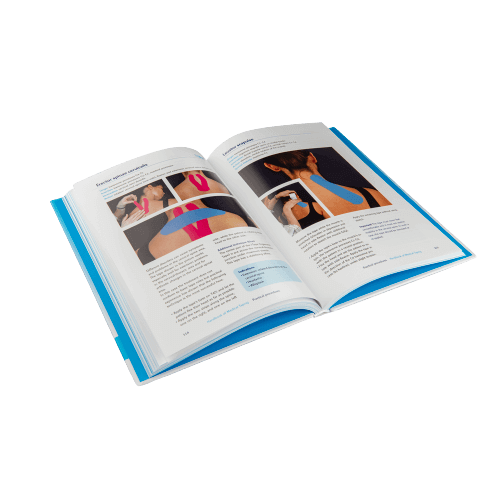CureTape® kinesiology tape is an effective tool for treating scars, whether they are fresh, fibrotic, or older and adhered to surrounding tissue. By using the Medical Taping method, CureTape® can help improve scar flexibility, reduce depth, and promote smoother skin. This gentle yet effective technique supports the healing process and enhances skin mobility.
Although the treatment may cause temporary sensitivity, the results are often remarkable. Many individuals notice visible improvements after just one treatment period, making further sessions even more effective.
Scar treatment with kinesiology tape is a key component of the Lymph Taping for Edema and Skin Therapists course, where professionals learn how to optimise healing and improve tissue function.
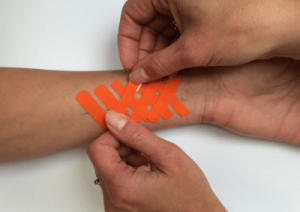
Get started with these items to tape scars
-
CureTape® Gentle – Kinesiology Tape for sensitive skin
-15%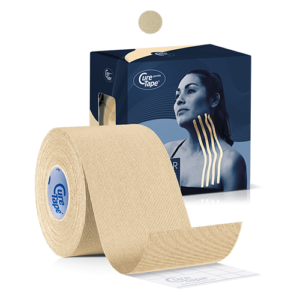 $11.86
In stockAdd to cart
$11.86
In stockAdd to cart -
CrossLinq® acupressure cross patches – Medium
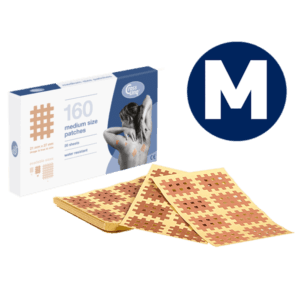 $14.95
In stockAdd to cart
$14.95
In stockAdd to cart -
CureTape® Classic kinesiology tape 1″ Beige (2 rolls)
-15%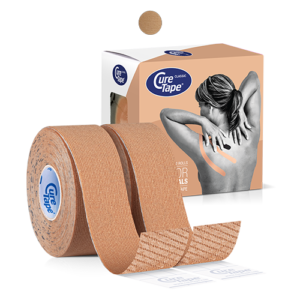 $15.26
In stockAdd to cart
$15.26
In stockAdd to cart -
CureTape® High Quality Scissor
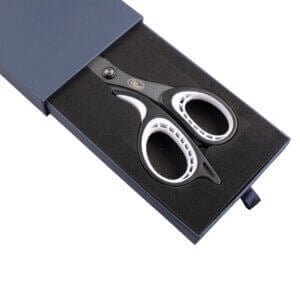 $20.00
In stockAdd to cart
$20.00
In stockAdd to cart

Christina’s advice when taping scars
When taping scars, it’s crucial to choose a tape that is not harsh on the skin. That’s why I recommend CureTape Gentle kinesiology tape. Always ensure the wound is fully closed before application. Cut thin strips of tape (0.4 inch), use the CureTape Cutter, and apply them with minimal stretch for newer scars or increased stretch (up to 85%) for older, more rigid scars.
Alternatively, you can use CrossLinq patches. CrossLinq® cross patches can be a great addition to scar therapy, helping to improve tissue flexibility and reduce tension in the affected area. These small, grid-like patches are designed to influence the skin’s microcirculation and underlying fascia, promoting better healing and reducing discomfort. When applied to hypertrophic or adhered scars, CrossLinq® helps to break up restrictions and improve mobility by gently stimulating the skin.
What is a scar?
A scar is a persistent deviation of the skin which is arise after healing of a wound. In superficial damage to the skin, there will occur no scars, but also when the dermis is damaged, there will be a visible scar.
The surgeon left a neat bonding in which no voltage than the skin can heal nicely. By stress or too much movement skin may get enough rest so that the scar will be visible. Below the skin surface scar tissue may occur in the connective tissue, also known as fibrosis of the tissue.
How to tape scars
Since kinesiology tape is not sterile, it should only be applied to a fresh scar once the wound is fully closed and covered with skin. However, to promote wound healing in the early stages, strips of tape can be placed alongside the wound to help speed up closure.
General Rules for Scar Taping:
- Cutting the Tape: Cut strips of tape 0.4/0.5″ wide, following the length of the roll.
- Stretching for Different Scars:
- For older or deeper scars, apply more stretch (up to 85%) to enhance mobility and flexibility.
- For newer scars, use minimal stretch to avoid excessive tension on delicate tissue.
- Applying the Tape:
- Do not stretch the anchor points (the ends of the tape) to ensure a secure hold.
- Begin applying stretch from the middle of the tape outward, following the ligament taping technique.
Did you know that scars are often a cause of imbalance in the body?
Scars can often be a cause of imbalance in the body, also scars can also cause other physical problems. MTC teacher Paul van Vliet Tapet since 1998 and is very experienced. When he investigates a client he always looks for any existing scars on the body. For example, a scar from an appendectomy or cesarean may cause undetected symptoms or cause example, do not run smoothly a particular movement.
Does your client in moving a limit? Apply a small strip CureTape® to the scar (preferably orange CureTape). Then ask your client to execute the movement again. Probably experienced immediate difference. Worth a try!
Research (Cohort Study): CureTape® has a beneficial effect on the evolution of scars
In a cohort study the researchers observed a statistically significant improvement with a large effect size for itch, POSAS global and SUM score, dermal thickness, color and elasticity. The purpose of this study is to investigate the effects of the reduction of tension on scars by applying CureTape®, the elastic therapeutic tape around the surface of the scar. CureTape® has a beneficial effect on the evolution of scars, when applied with this specific technique.
“In conclusion, the scar characteristics that met the criterion of statistically significant improvement over time with a large effect size (cohen’s d > 0.8 or < -0.8) are itch (POSAS P), global score (POSAS P, POSAS O), SUM score (POSAS P, POSAS O), colour (POSAS P, POSAS O and Chromameter®), elasticity (POSAS P, POSAS O and Cutometer®) and dermal thickness (Dubcutis®).” Download the full article (17 pages) >>
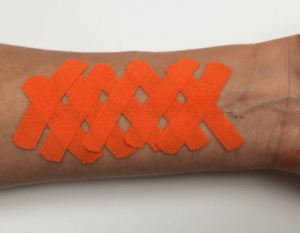
Learn how to tape
- The Ultimate Taping Guide: Focuses on self-taping for the 30 most common injuries where taping provides support.
- Kinesiology Taping Method Manual: Designed for (para medical) professionals, covering basic taping techniques and various pathologies.
What are you waiting for? Order a copy today!
THYSOL is the manufacturer of the kinesiology tape brand CureTape. As CureTape, we have been training and supplying professionals for 25 years. And consumers now know how to find us too! By manufacturing all our tapes in our own factory, we can guarantee the best quality!
Please note that the indicated tape applications and information on our website about the possibilities with kinesiology tape have not yet been scientifically proven. The statements and examples mentioned are based on long-term experiences of patients and trained therapists.
Contraindications not to tape: pregnancy, open wounds, broken bones, unexplained complaints, allergies and skin diseases, use of medication such as blood thinners, thrombosis and fever. Always apply tape in consultation with a specialist.


